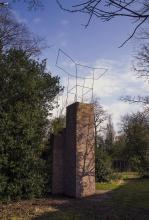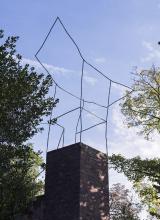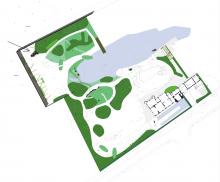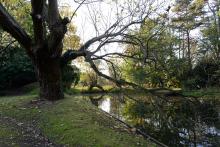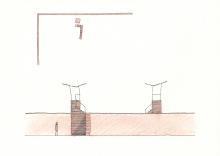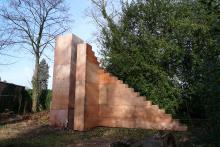permanent installation, Gentbrugge, Belgium
This intervention is sited in the remotest corner of a historic castle garden with a predominately 19th-century typology. The design ties in with the tradition of placing a folly in gardens like these, mostly in the form of a miniature temple. A folly is often described as a useless building, but in fact it lends perspective to the garden due to its remote location.
Just like a folly, the artwork creates depth, thus also opening up the - by definition - enclosed reality of the garden. The piece is an orientation point, but it does not immediately reveal itself. It needs to be discovered, and invites you to ascend its brick steps. From the top of the tower, we can look out over the garden wall into the municipal cemetery.
After the idyll of the garden, this view brutally confronts us with our mortality. On this boundary the sight of death, the ultimate unknown, puts us in a precarious position. The tower’s structure is the physical translation of this: a frail construction which is stripped bare and which seems to have been distorted by time and the wind.
